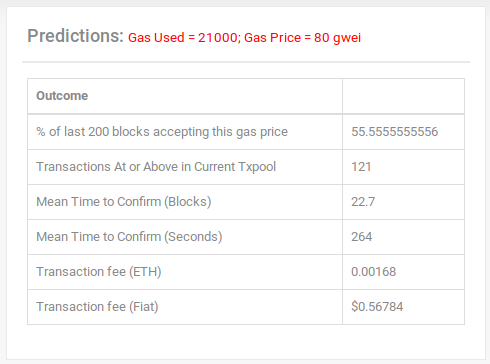Cryptocurrencies cannot ever be worth millions because transaction fees would halt the network
Crypto traders are used to living with wild speculations about future cryptocurrency prices.
So much so, these crazy price predictions have begun to be taken only half seriously, as most crypto investors learn to perform due diligence and do their own research.
We hear things like “Bitcoin will be worth U$ 10 million” or “I’ll eat my private parts if Bitcoin isn’t worth $1 million” or “Ethereum will overtake Bitcoin” and so on. Stuff like that has become the norm in Telegram groups, Crypto Twitter and other communities.
These types of predictions should be taken as half serious, at best. Some should even go straight to the humor section. Especially since they’re absolutely impossible to happen! In this article we explain why cryptos can’t ever be worth the crazy amounts predicted by so many influencers.
The TX Fee Obstacle
In short: Fees are the limiting factor in crypto valuation because crypto transactions are paid in cryptos themselves.
This is both good and bad!
Good, because it generates liquidity. The currency is always on the move, no matter how small the amounts are.
Bad, because of what we’ll discuss next.
Taxation Laffer Curve
Consider, then, an analogy between cryptocurrency fees and government taxation. The fees are the “tax” you pay in order to move coins around.
Then, the reference to the Laffer Curve becomes obvious: there is a point in crypto valuation where transactions become too expensive to make the whole transaction worth it.
Where is this point located, exactly?
Can Bitcoin ever be worth millions of U$ and still accommodate affordable transactions?
Ethereum GAS
Let’s have a look at what’s arguably still the most popular smart contract-based cryptocurrency : Ethereum.
The minimum fee required in order to transfer Ethereum is 21,000 GAS. To transfer Ethereum-based tokens you need to make a function call to a smart contract, which is more expensive than transferring bare ETH : token TX’s cost a minimum of 50,000 GAS.
According to GAS Station, right now (last updated September 2020) a simple Ethereum transfer costs around 57 pennies of a dollar.

A token transfer is approximately 2.5 times the Ethereum transfer cost, which adds up to $ 2.40 USD.
Now, imagine a smart contract which requires one hundred function calls, at today’s prices. A simple interaction with this smart contract would cost over U$ 240 just to run these functions.
This is what’s happening with DeFi right now : ETH fees got so high, miners are raking in hundreds of $ in transaction fees for the most simple operations.
If Ethereum were to gain 10X price over the next few years, each such contract interaction could cost U$ 2000 or more. As you can see this will quickly reach a point where it’s no longer worth using a certain cryptocurrency due to high fees.
(Note : This applies to any cryptocurrency, not just Ethereum. We’ve used Ethereum as an example due to its popularity.)
Right now, contracts are relatively simple pieces of software. Most contracts still simply involve token creation, though DeFi is bringing more sophisticated code into the ecosystem.
Still, the expectation of Ethereum being worth tens of thousands of U$ is based on the assumption that highly sophisticated logic will be implemented using Ethereum smart contracts. If this is the case, then as we’ve seen, this might make computation too expensive on the Ethereum Virtual Machine.
We’ve had a look at two other false expectations investors may have, namely:
Both of these cases illustrate how crypto investors have unreal expectations about future valuations of their coins.
Time for Reality Check
Crypto investors need to be realistic about price expectations.
Keeping expectations in check helps the core developers build the right features into cryptos.
We’ve seen the quick adoption of Lightning Network in Bitcoin, which is currently showing impressive results. We’ve also witnessed Ethereum’s own efforts to lower mining costs and to be more energy efficient as we look forward to Ethereum 2.0’s Proof of Stake system. These are healthy developments for all cryptos and the last thing we need is pumps and dumps based on unreal expectations.
The truth is, the price of the cryptocurrencies in themselves cannot rise above a certain point or it’ll start slowing the network itself, which in turn will run less transactions and mining profits will dwindle for everyone.
This is the cryptocurrency Laffer curve : intrinsic network taxation (fees) cannot overwhelm network productivity, or it’ll start to have a negative effect on the network itself.
Therefore, cryptocurrency prices cannot ever reach the astronomic numbers predicted by influencers, as it would make transactions too expensive for mass adoption.
Links
Ethereum scalability issues exposed as high gas fees stall DeFi boom
Using a DeFi protocol now costs more than $50 as Ethereum fees skyrocket
Defi Boom Fueling ETH Gas Fees, Threatens Viability of Smart Contracts
The DeFi Fee Explosion: How YAM’s Collapse Drove Ethereum Fees to New Heights
crypto.bi - SHA256(crypto) Inc - Piazza Giordano A147 - 978 - contact@crypto.bi - We love Rome, Italy + Barcelona - 17DAB9EF880DA3BF